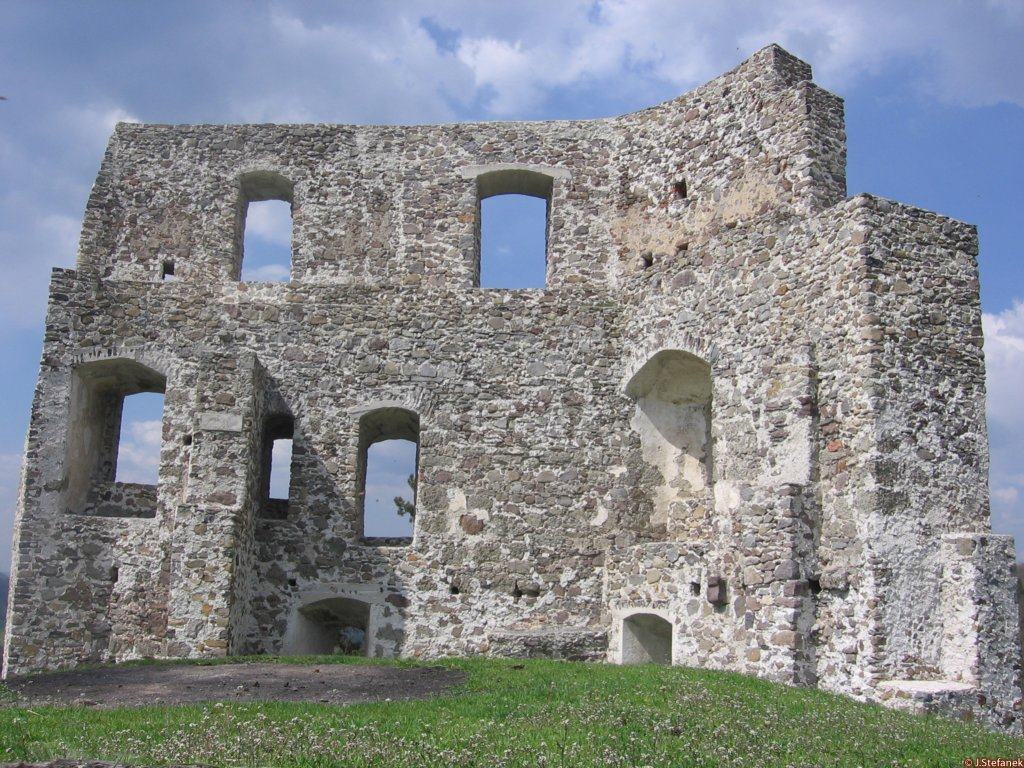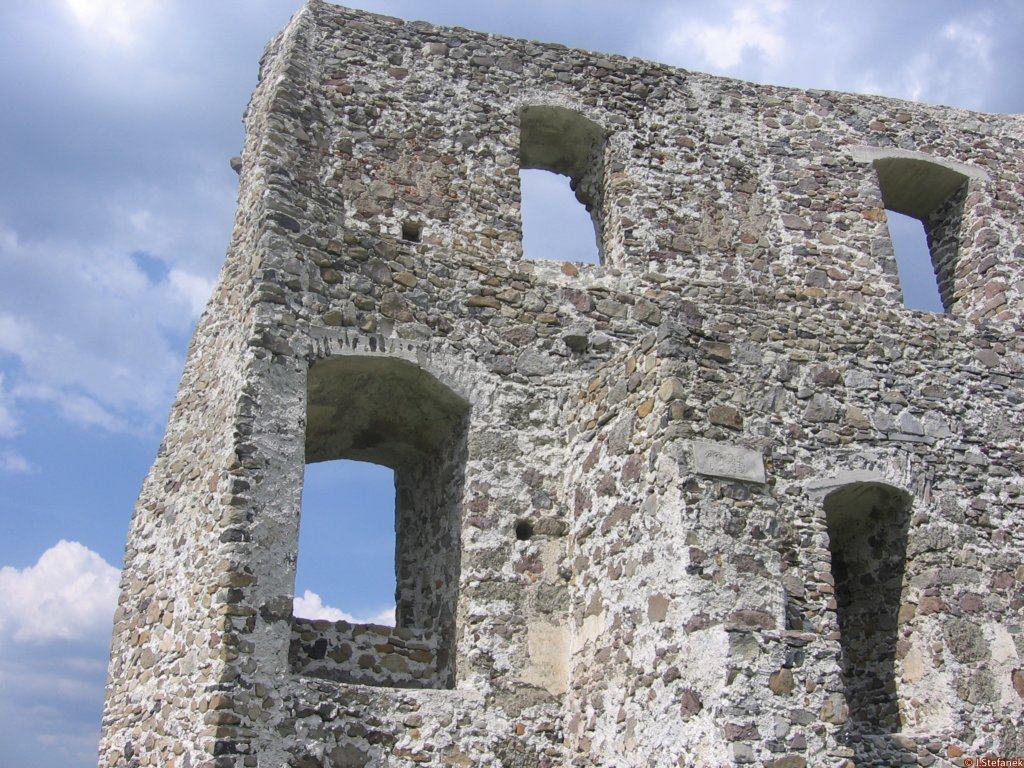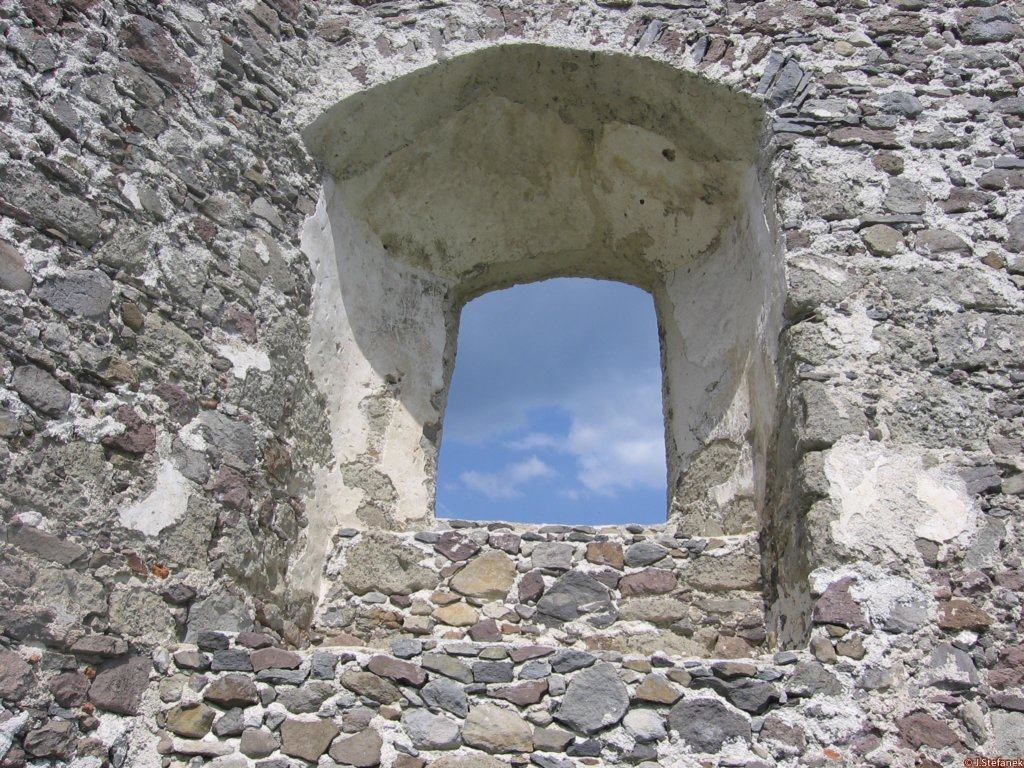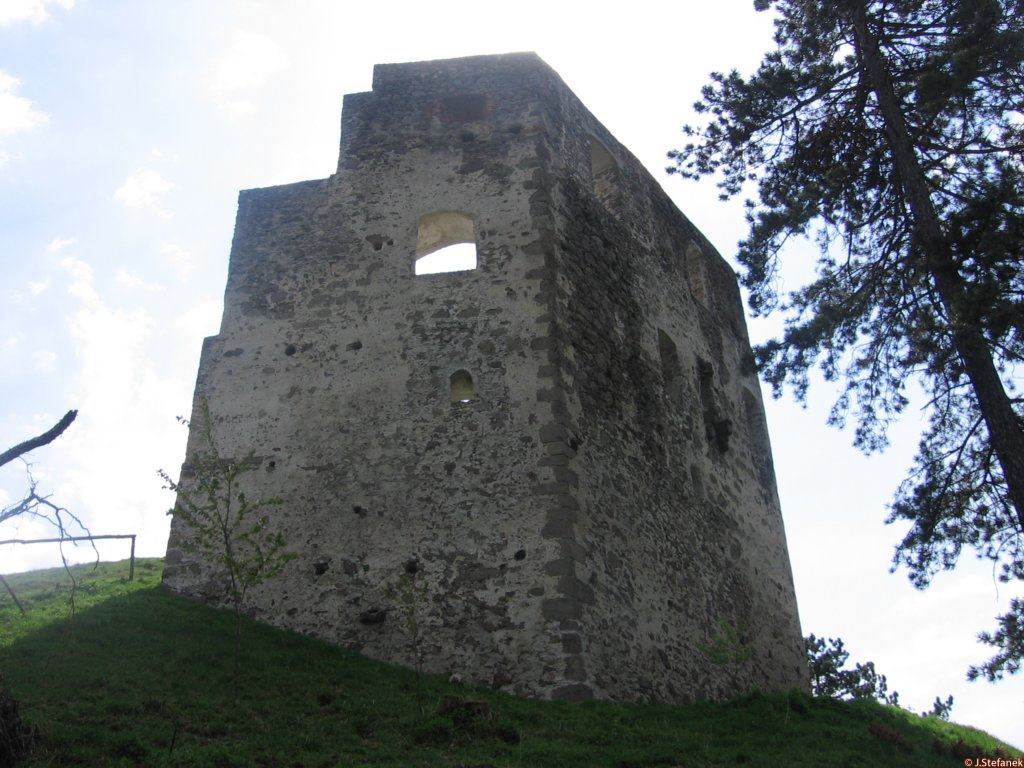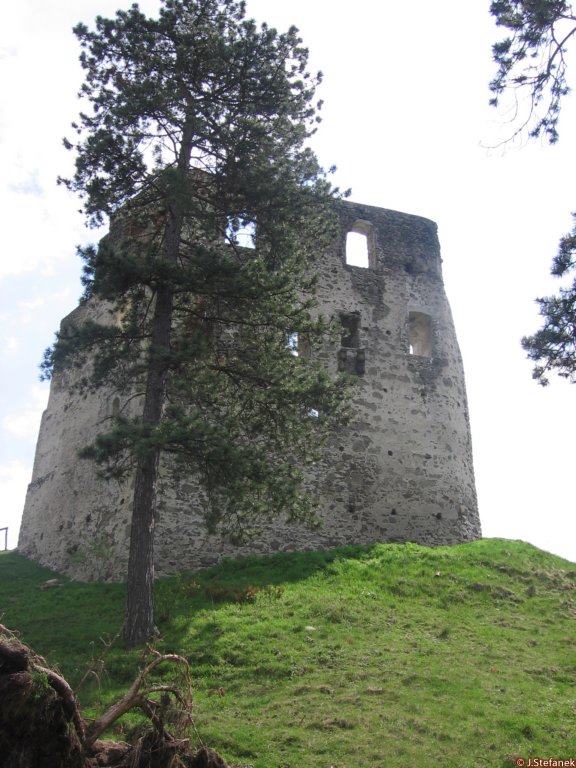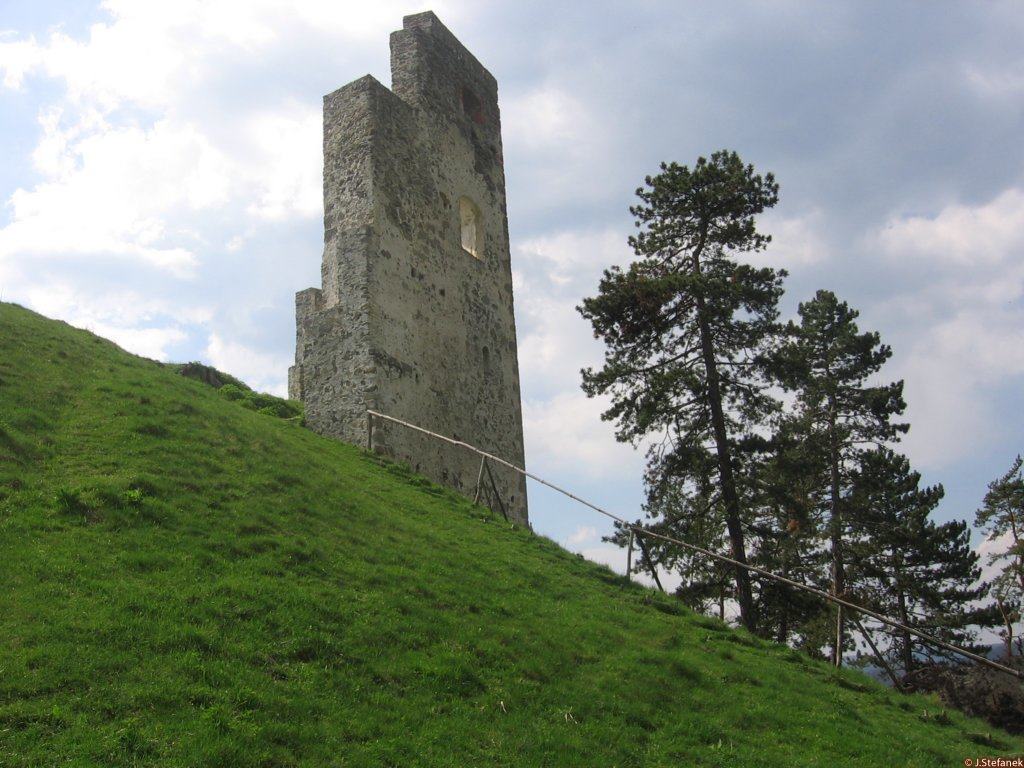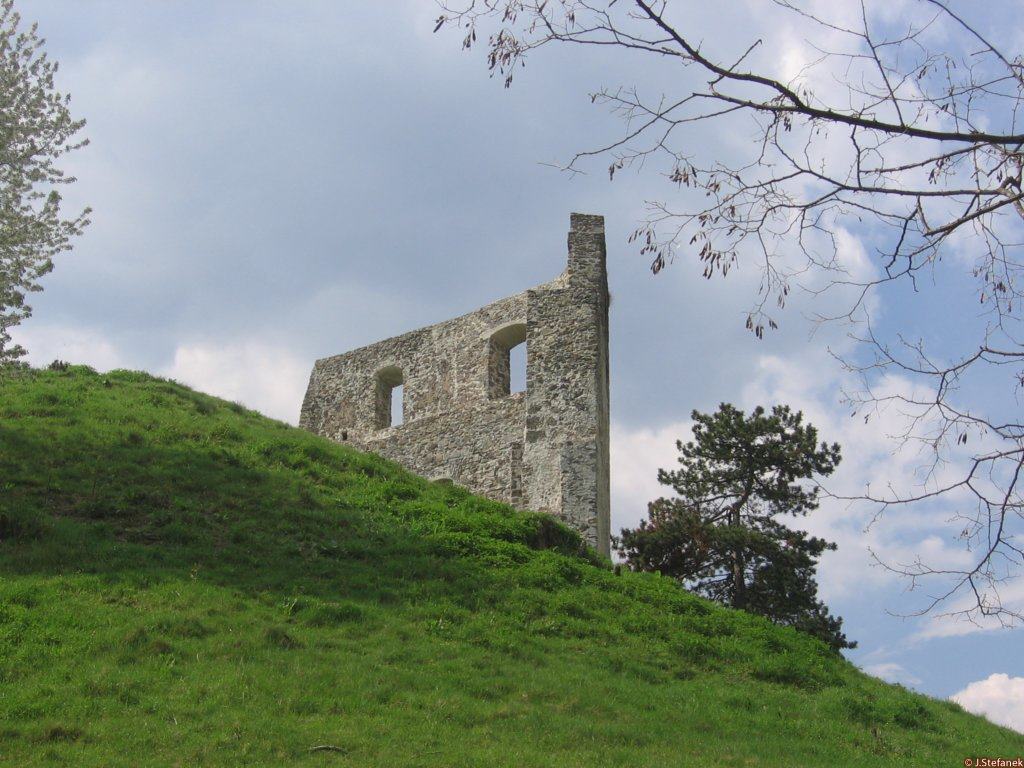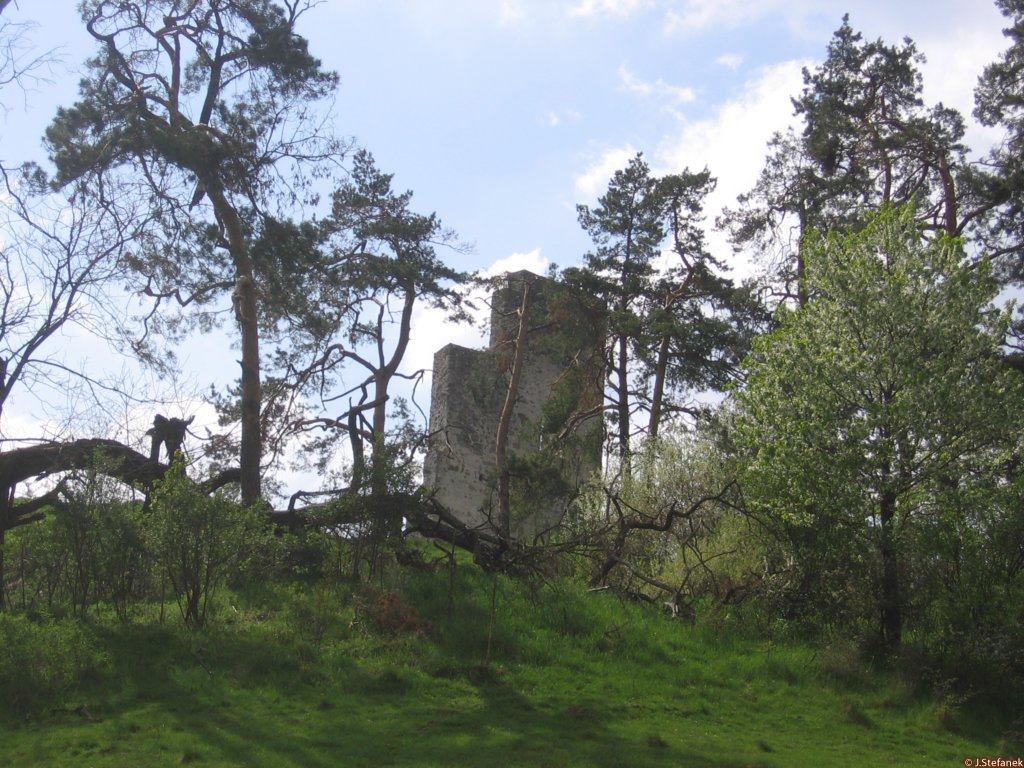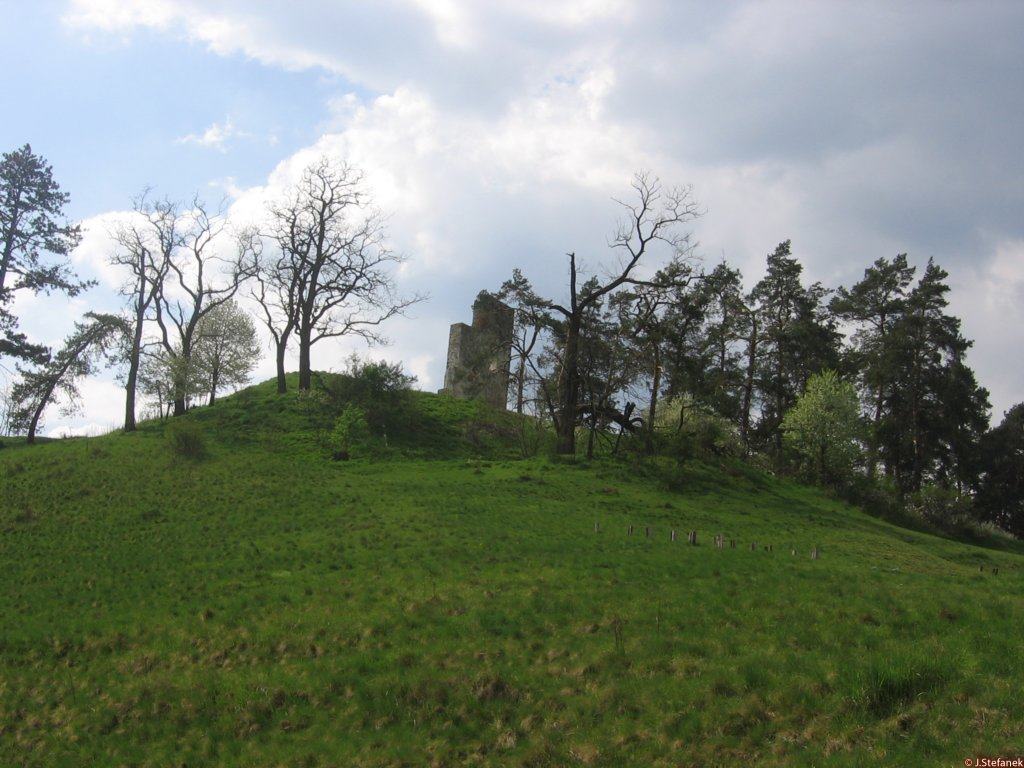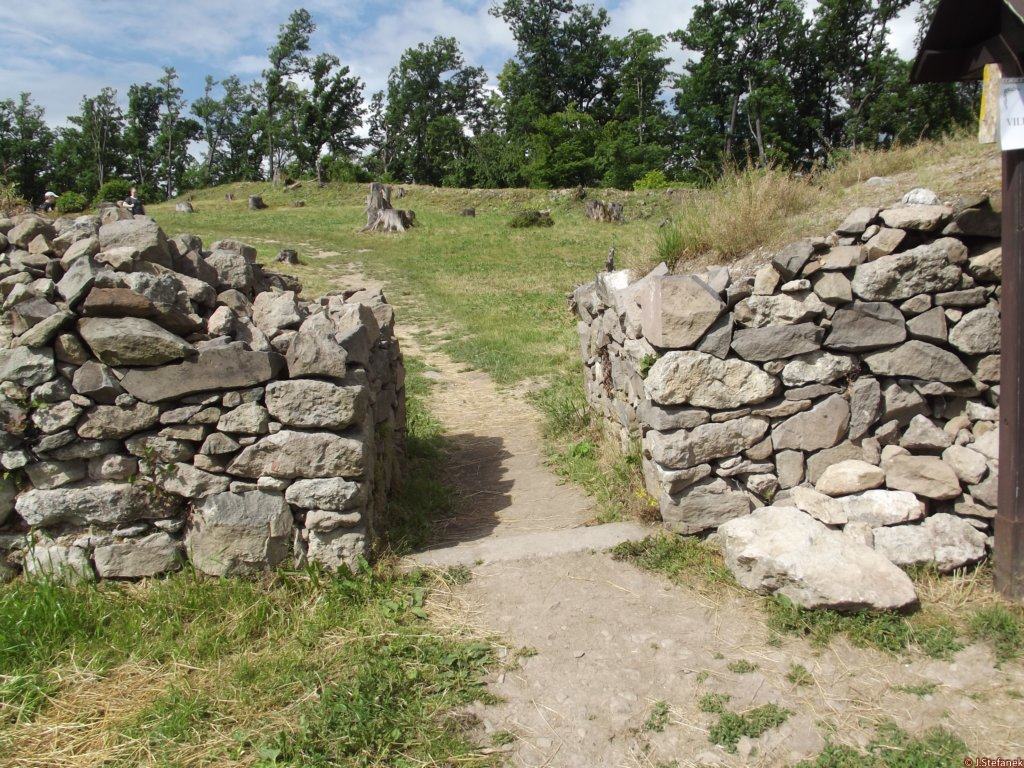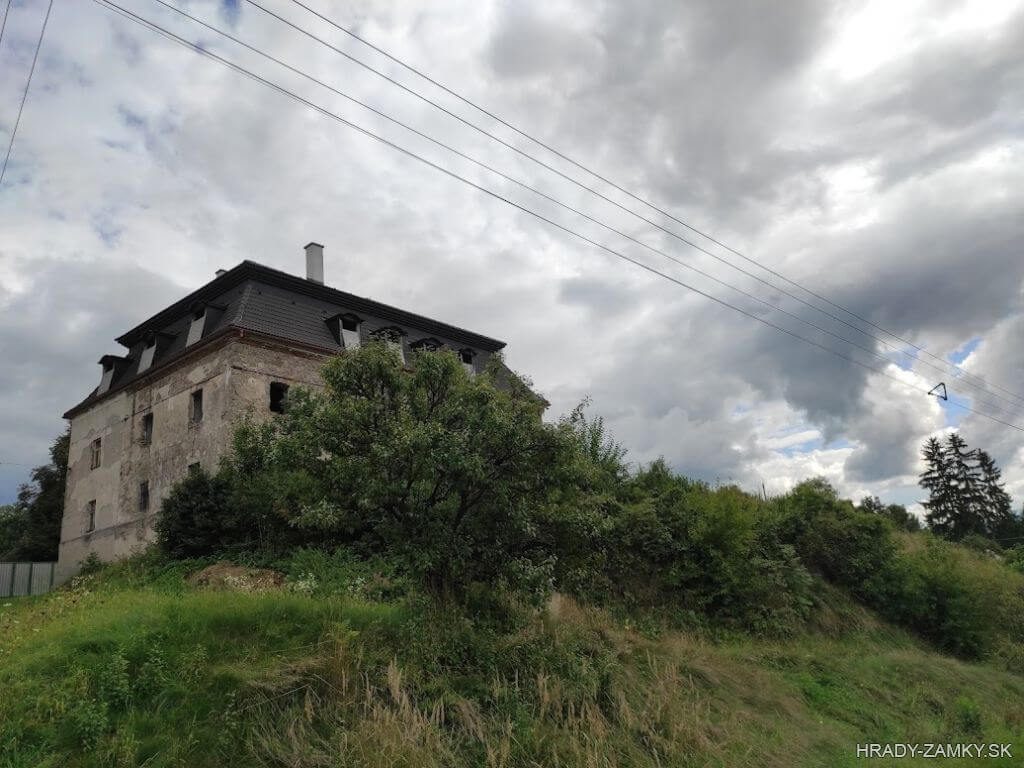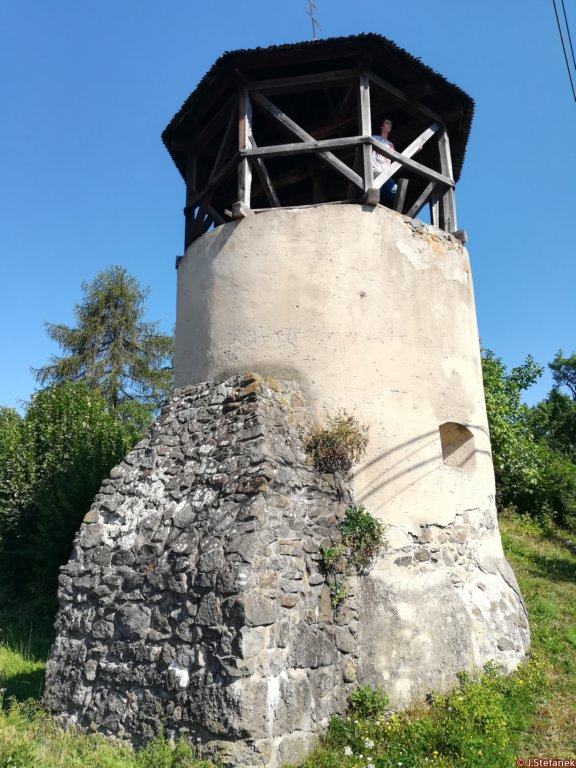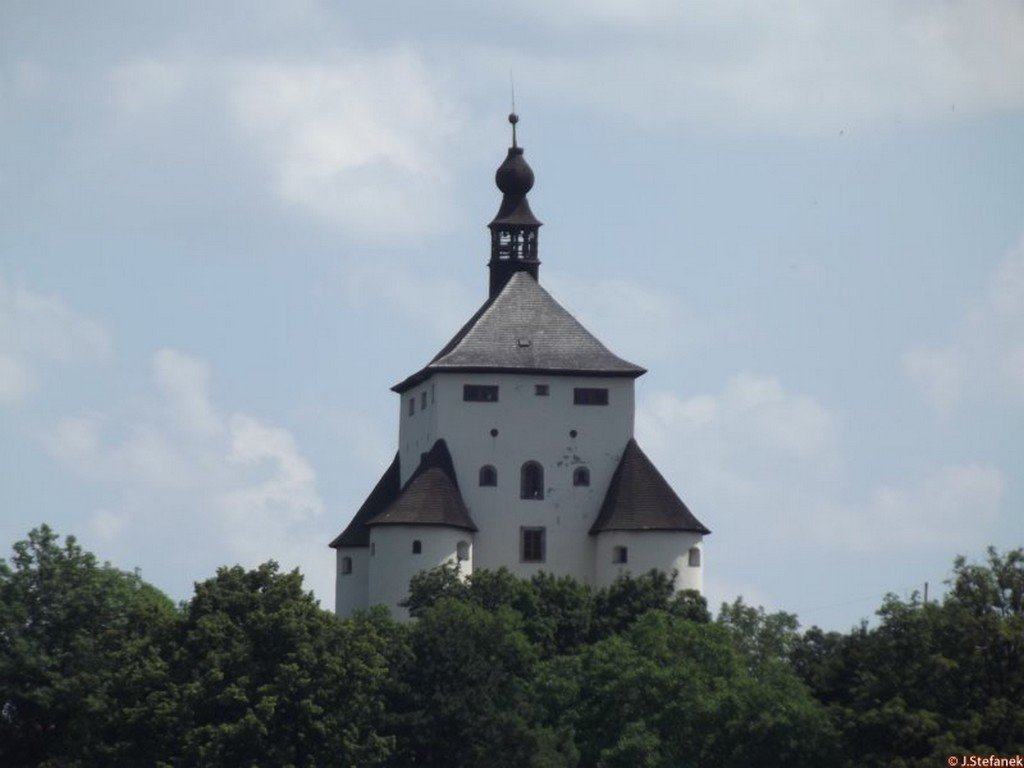Dobrá Niva
Podzámčok Banská Bystrica county Slovakia
castle ruin
Dobrá Niva
Podzámčok Banskobystrický kraj Slovakia
zrúcanina hradu
The ruins of a gothic castle on a conical hill towering at the junction of Javorie and Pliesov basin above the northern edge of the village Podzámčok
Zrúcanina gotického hradu na kužeľovitom kopci, týčiacom sa na styku Javoria a Pliešovskej kotliny nad severným okrajom obce Podzámčok
Previous names
Dobruna, Dobronivá, castrum de Dobronya, Dobra, Dobronya, Dobraniva
Roads
Dobrá Niva castle, or rather the remainder of the castle wall, can be seen already from the main road Krupina-Zvolen. It is located on an interesting mountainous hill in the village Podzámčok, about 3-4 km from the village Dobrá Niva. To get to the castle easily - from the main road in the village Podzámčok go deeper into the village, continue straight across the village and at the end turn left along the church. We get directly under the castle where we can park. From there it is only a few minutes of gentle ascent to the castle.
Hrad Dobrá Niva, či skôr zvyšok hradnej steny, badať už z hlavného ťahu Krupina-Zvolen. Nachádza sa na zaujímavom homoľovitom kopci v obci Podzámčok, asi 3-4 km od obce Dobrá Niva. K hradu sa dostaneme jednoducho - z hlavnej cesty v obci Podzámčok vojdeme odbočkou hlbšie do obce, pokračujeme rovno naprieč celou obcou a až na konci odbočíme vľavo popri kostolíku. Dostaneme sa priamo pod hrad, kde môžeme zaparkovať. Odtiaľ je to k hradu len pár minút mierneho výstupu.
Description
The castle used to consist of a two-story palace, a tower and stone walls. The outer fortifications were earthy. Today we can still see the remains of ramparts along almost the entire perimeter of the castle hill.The description of the castle from 1668 shows the castle palace as a stone building, protected by two gates, a bastion and a strong fortification.
Hrad kedysi pozostával z dvojposchodového paláca, veže a kamenných hradieb. Vonkajšie opevnenie bolo zemné. Dnes vidieť ešte zvyšky valov po takmer celom obvode hradného kopca.Opis hradu z roku 1668 popisuje hradný palác ako kamennú stavbu, ktorú chránili dve brány, bašta a silné opevnenie.
Plan
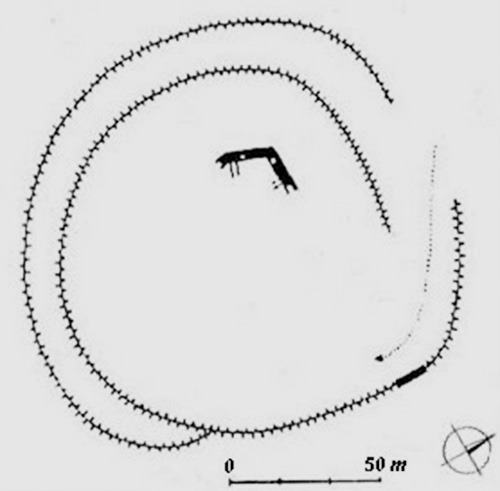
-
History
We know little about history about this castle. The guard castle was built probably in the second half of the 13th century after the Tartar invasion. However, the first written mention is from the years 1305-1306, when the castle is mentioned as Castrum de Dobronya. In 1306, the castle was owned by Matúš Čák Trenčiansky, who married the castle from Demeter Zólyomi and Donč. After his death, the castle fell into the hands of the monarch. From 1424, the castle was the property of Hungarian queens. In 1427-1437 it belonged to Queen Borbal and from 1439 to Queen Elizabeth. In the middle of the 15th century, it was one of the pillars of the troops of Ján Jiskra and the brothers, when the castle was promised to them by the castle in 1447. Hunyadi. In 1455, Andrej Baumkirchner received the castle, which was partially damaged, on the condition that he must put the castle in order. The restored castle was acquired from Baumkirchner by King Matej Korvín in 1463, who later in 1464 donated the castle to Benedik Thurócz.
After 1476, the castle was acquired by Queen Beatrix, from whom the castle was deposited by Bernát Frangepán in 1490. In 1515, Štefan Perényi married Isotta Frangepánová, thus becoming the owner of the castle. In 1518, however, he exchanged the castle with Štefan Verbőczy for another manor. In 1527, František Révay received the castle as a gift, but he could not control it, as it was occupied by Bálint Török. Soon after, Dobra Niva was occupied by royal troops. In 1531 it was taken over by the mayor of Thurn for Queen Mary, who surrendered the castle in the name of the king in 1548.
The importance of the castle increased during the Turkish invasions at the end of the 16th century. The castle experienced the most serious danger during the attack of the Sečian and Fiľak begos in 1583. The castle was successfully defended mainly thanks to the timely help of the Zvolen captain Juraj Barbarič. At that time, the castle was in such a bad condition that the Dobroniv estate had to move to a new building, which was built in the castle grounds in 1609. Only the military garrison remained at the castle. The castle had several owners, but the longest, from 1614 to 1804, was owned by the Eszterházy family. In 1805, the royal office bought the castle for the needs of the mining chamber and since then the castle began to be abandoned. The already ruined castle was also helped by the villagers, who used some parts of the castle as a building material for their homes. In 1996, the ruin (preserved wall of the castle) underwent reconstruction and conservation.
O tomto hrade vieme z histórie len málo. Strážny hrad bol postavený pravdepodobne v 2.polovici 13.storočia po tatárskom vpáde. Prvá písomná zmienka je však z rokov 1305-1306, keď sa hrad spomína ako Castrum de Dobronya. V r.1306 bol vlastníkom hradu Matúš Čák Trenčiansky, ktorý si hrad vzal od Demetera Zólyomiho a Donča. Po jeho smrti sa hrad dostal do rúk panovníka. Od r.1424 bol hrad majetkom uhorských kráľovien. V r.1427-1437 patril kráľovnej Borbále a od r.1439 kráľovnej Alžbete. V polovici 15.storočia bol jednou z opôr vojsk Jána Jiskru a bratríkov, keď im hrad prisľúbil v r.1447 Hunyadi. V r.1455 dostal hrad, ktorý bol čiastočne poškodený, Andrej Baumkirchner s tou podmienkou, že musí dať hrad do poriadku. Obnovený hrad získal od Baumkirchnera kráľ Matej Korvín v r.1463, ktorý neskôr v r.1464 hrad daroval Benedikovi Thuróczovi.
Po roku 1476 získala hrad kráľovná Beatrix, od ktorej hrad dostal do zálohu Bernát Frangepán v r.1490. Štefan Perényi si v r.1515 vzal za manželku Isottu Frangepánovú, čím sa stal majiteľom hradu. V r.1518 však hrad vymenil so Štefanom Verbőczym za iné panstvo. V r.1527 dostal hrad do daru František Révay, ale nedokázal ho ovládnuť, keďže ho obsadil Bálint Török. Onedlho potom Dobrú Nivu obsadili kráľovské vojská. V r.1531 ho zabral župan Thurn pre kráľovnú Máriu, ktorá sa hradu vzdala v mene kráľa v r.1548.
Význam hradu sa zvýšil počas tureckých nájazdov koncom 16.storočia. Najvážnejšie nebezpečenstvo hrad zažil počas útoku sečianskeho a fiľakovského bega v roku 1583. Hrad sa podarilo ubrániť najmä vďaka včasnej pomoci zvolenského kapitána Juraja Barbariča. Vtedy bol hrad v takom zlom stave, že sa Dobronivské panstvo muselo presťahovať do novej budovy, ktorú postavili v podhradí v r.1609. Na hrade zostala len vojenská posádka. Hrad mal viacerých majiteľov, avšak najdlhšie, od roku 1614 do 1804, ho vlastnil rod Eszterházyovcov. V r.1805 kráľovská kancelária odkúpila hrad pre potreby banskej komory a odvtedy začal hrad pustnúť. Už beztak zrúcanému hradu napomohli aj dedinčania, ktorí niektoré časti hradu použili ako stavebný materiál pre svoje obydlia. V r.1996 zrúcanina (zachovaná stena hradu) prešla rekonštrukciou a konzerváciou.
Myths and legends
There are no myths available.
Povesť o hrade
Hrad stojí na kopci, ktorý mala v košíku nanosiť Rózka, aby zachránila svojho milého pred šibenicou. Úlohu jej pomohli splniť víly, čo sa jej prisnili v spánku.
Useful information
The ruin is freely accessible
Zrúcanina je voľne prístupná
Nearby castles
